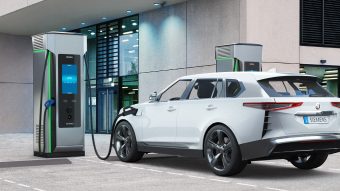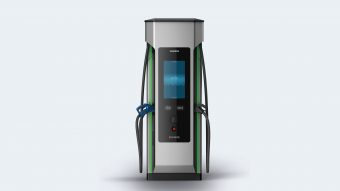
What came first, the chicken or the egg? We do not have the right answer to this question! What is the condition for the development of e-Mobility: a publicly available network of fast chargers or an affordable price for electric cars and an increase in the number of their users (customers)?
The answer to this second question is obvious: the development of the network or infrastructure of fast chargers is one of the main conditions (in addition to lowering the still high prices of electric cars) for the faster development of e-Mobility and the mass transition to this type of transport. The fear of an empty electric car battery while driving, and far from any charging options, is largely present (I witnessed the same during a test drive of an electric car when, due to works, the highway lane on the side where the gas station is, was closed with the only charger on the route I drove). At the same time, your gaze is focused on the battery status indicator and the number of kilometers to the next charging point.
Clearly, home and workplace charging are not only the primary charging options for today but also in the near future. However, suppose we want to increase the acceptance of e-Mobility and make e-cars more of a mainstream means of transportation. In that case, we will need to set up comprehensive public fast charging networks. And as a recent study, commissioned by the German BMVI (Bundesministerium für Verkehr und digitale Infrastruktur), predicts, public charging will be one of the three most important pillars for a successful e-Mobility environment in 2030.
In focus:
According to the study, around 41 per cent of the total amount of energy needed for charging in Germany would be used at private charging points, but approximately 32 per cent of publicly accessible charging points will nearly cover the same amount of energy. The remaining 27 per cent will be used for charging points at workplaces and in company parking lots.
However, a couple of items should be singled out here. Firstly, there are users of electric cars who do not have the option of charging the battery at home or work. Secondly, there are users who travel many kilometers per day and thirdly, battery technology is progressing, which allows a charging power of up to 300 kW and a voltage of up to 1000 V. Even if the charging capacities of most electric cars are still limited today, they will be able to accept higher charging power in the future. In this context, public networks – fast-charging infrastructure are becoming increasingly important.
And what that infrastructure will look like? In addition to individual quick charging options, e.g. in city car parks or supermarkets, there is a trend of public charging stations “hubs” for fast charging – a kind of electric version of the gas station. Ideally, these charging stations are located in city centers, infrastructural intersections, or along highways where, e.g. ten or more e-cars can charge quickly at the same time, along with options for drivers to be busy with something while waiting for about 15 minutes to recharge their pet’s battery, such as cafes or shops. To meet these market demands, last year Siemens launched its new fast charger called SICHARGE D with a maximum power of 300kW.
Modernly designed and robust, it is suitable for highways and city fast-charging stations, city parking lots, as well as shopping malls, airports or railway stations and provides high charging efficiency, scalable charging power and dynamic energy sharing when charging multiple electric cars simultaneously. With a constant charging efficiency of over 95.5 per cent and a peak efficiency of 96 per cent, the new SICHARGE D charger ensures that almost all of the electricity generated is delivered to the car being charged.
For customers, this means reduced operating costs. Additionally, the charger is designed to meet the future technological development of electric vehicles and their batteries. The charging capacities of most of today’s electric cars are limited. Still, the new charger will be able to accept higher charging power in the future as well as higher charging voltage ranges. SICHARGE D has a scalable charging power of up to 300 kW. Since the base power of the charger is 140 kW, it can be upgraded through “plug-and-play” modules up to a maximum capacity of 300 kW (PowerUp option).

The charger supports voltages between 150 and 1000 V and currents up to 1000 A on all DC sockets. It allows full loads for future 800 V battery charging electric cars and most of today’s electric vehicles with lower charging voltage values. The number of electric cars is growing slowly, so today’s investments in infrastructure are challenging. With the option to expand SICHARGE D chargers with two external dispensers (additional charging ports the same charger – ConnectPlus option), investors can determine the time of investment in extensions according to market requirements.
The standard configuration has two DC sockets (AC socket is optional), while the maximum number of DC sockets is 4 pcs. achieved by an additional installation of the mentioned dispensers. This allows 5 electric cars to be charged simultaneously on this charger (4 on DC sockets and 1 on AC sockets). The new charger combines these features with dynamic parallel charging (FullDPA option – Dynamic Power Allocation). It means that the charger considers the individual power demand of each connected electric car and automatically adjusts the charging process to the technology of each battery and charging status. This ensures that all connected electric cars get the maximum power available from the charger without any additional manual intervention.
Prepared by: Dejan Milovanović
Read the story in the new issue of the Energy portal Magazine ELECTROMOBILITY.



